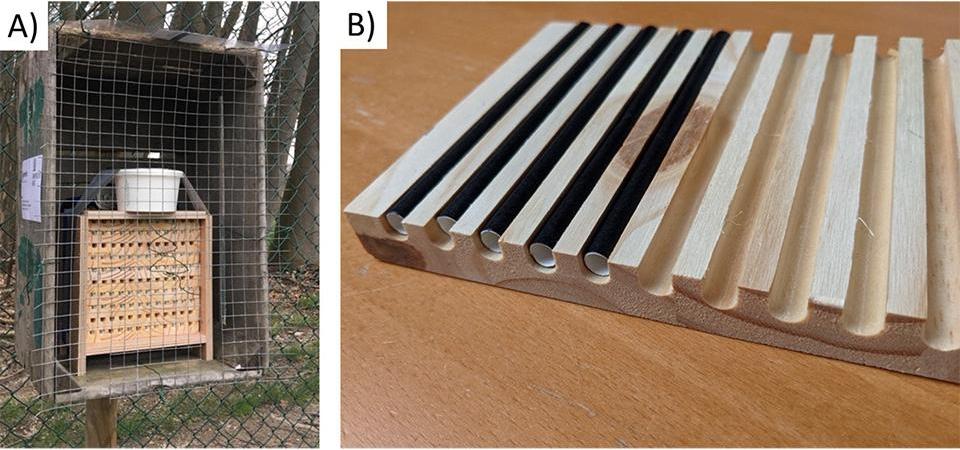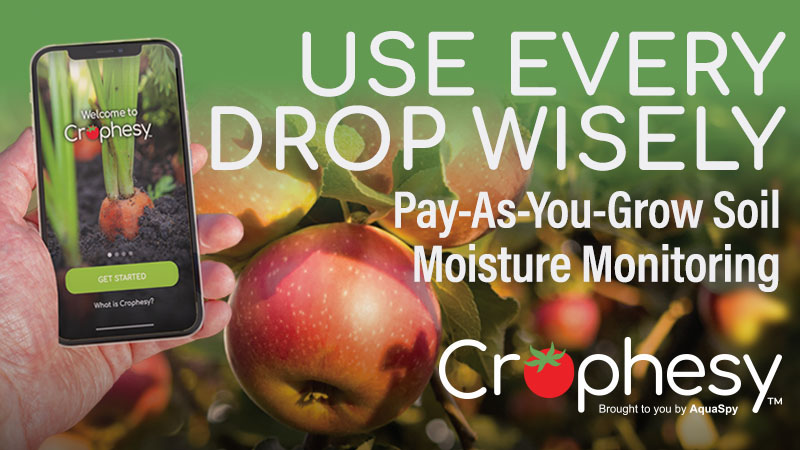What’s the Preferred Nesting Choice of Mason Bees? Stone Fruit Growers Should Know
Mason bees are gaining attention because they are very effective pollinators of fruit crops. However, there are various nesting materials in use with little consensus on which is the best. In addition, several parasites can occur in mason bee nests that can reduce offspring development and future pollinator populations in orchards.
Recently, my colleagues and I showed that Mason bees exhibit preferences for nesting material, and that nesting material and surrounding landscape affects parasite infestation and nesting success, respectively.
NESTING PREFERENCE
In 2020 we installed a single wooden nest box per orchard, with 80 nesting cavities in 12 sweet cherry orchards in Belgium. Paper straws were inserted in 40 cavities, whereas nothing was inserted in the other 40 cavities (Figure 1). Mason bee nesting activity was monitored during and after sweet cherry flowering.

Figure 1: Set up of the nest box in an orchard, with (A) 100 cocoons of the European orchard bee (Osmia cornuta) deployed on top of each nest box; and (B) detail of the paper straw vs. the wooden nesting cavities.
Photos by Maxime Eeraerts
Results showed a clear preference, with mason bees preferring the paper straws compared to the wooden cavities. On average, there were 35% more nests made in paper straws. Mason bees likely prefer fully rounded nest cavities, such as the paper straws, compared to modular wooden nest cavities because they can more easily plug the brood cells with mud, a required step in its reproductive cycle.
PARASITES
In October 2020 all sealed nest passages were opened and their contents inspected for healthy cocoons and brood cells infested with parasites. We found 92% more brood cells with mites in the wooden nest cavities compared to the paper straws.
Regarding parasitic fruit flies, we found no difference between the two nesting materials. However, 73% of parasitic fruit fly larvae were found in brood cells formed after cherry flowering. These two findings suggest that paper straws reduce mite parasitism and that sealing nesting boxes after cherry flowering could be a good strategy to further reduce fruit fly infestation.

Figure 2: Overview of parasitic mites, Chaetodactylus spp. (A and C) and parasitic fruit flies, Cacoxenus indagator (B and D).
Photos by Maxime Eeraerts
LANDSCAPE INFLUENCE
We investigated whether the amount of natural habitat around orchards affects the reproduction of the mason bees. By natural habitat we mean hedgerows, tree rows, shrub vegetation, mixed woods, or deciduous forests.
We found that, with increasing proportion of natural habitat, the proportion of female bees in offspring increases by 10%. These natural elements often contain food sources in the period before, during, and after crop flowering. The positive effect of natural habitat is attributed to more and diverse food resources for mason bees, which is better for the reproduction of mason bees, and thus has potential to increase pollination the following year by increasing mason bee populations.
TAKE-HOME MESSAGES
The European orchard bee prefers to make nests in paper straws compared to wooden nesting cavities.
Inserting a paper straw into the wooden nests reduces the number of parasitic mites by 92%.
Parasitic fruit flies only become a problem from the end of cherry flowering. These parasites can be managed by covering or removing the mason bee nests at the end of crop flowering.
More natural habitat around the orchard promotes more female bees to develop for the following year, which can enhance pollination in future years.
Editor’s Note: The research is addressed in a podcast on the Oregon State University Extension page and a video on Maxime Eeraert’s YouTube page. See below.









